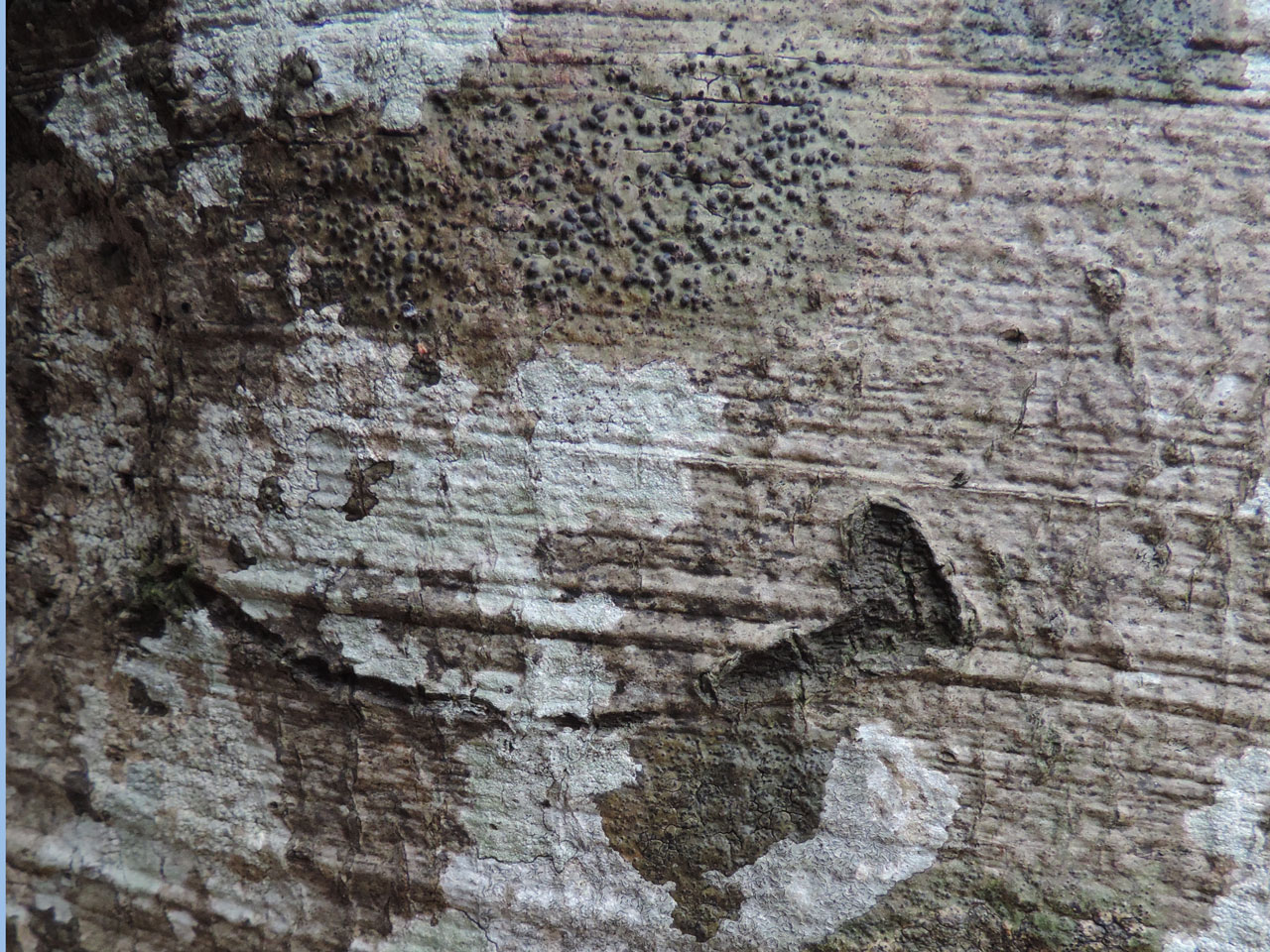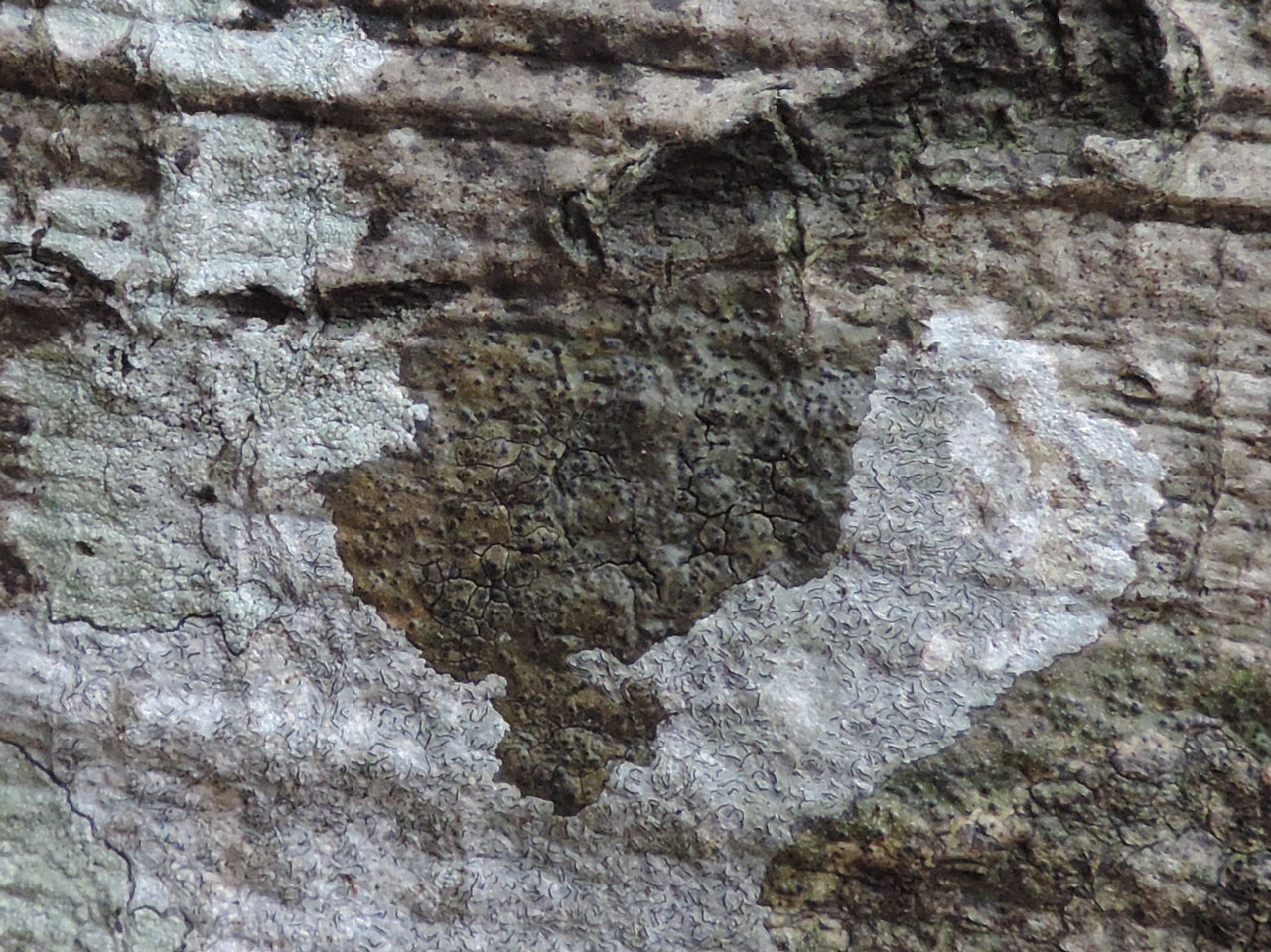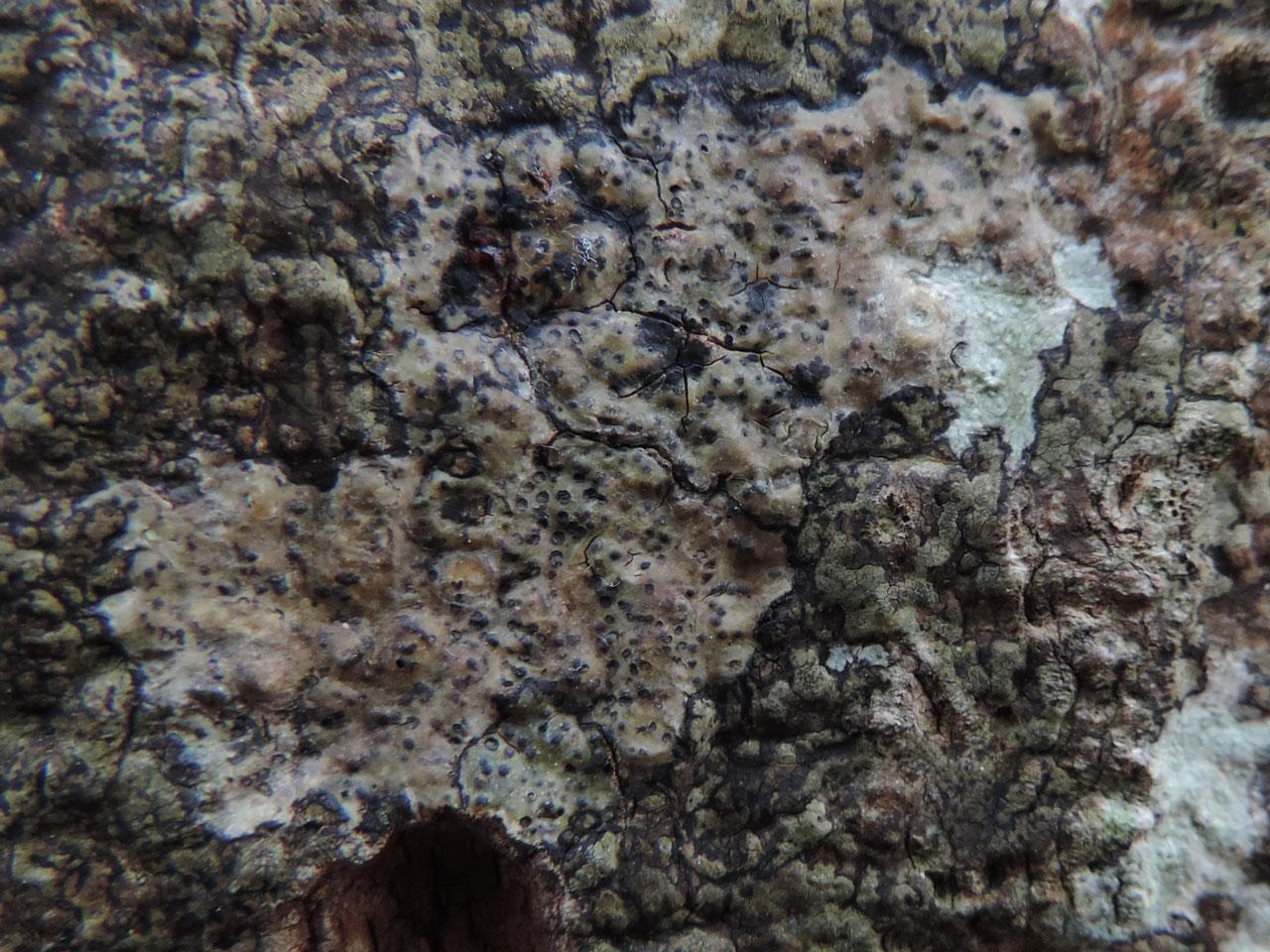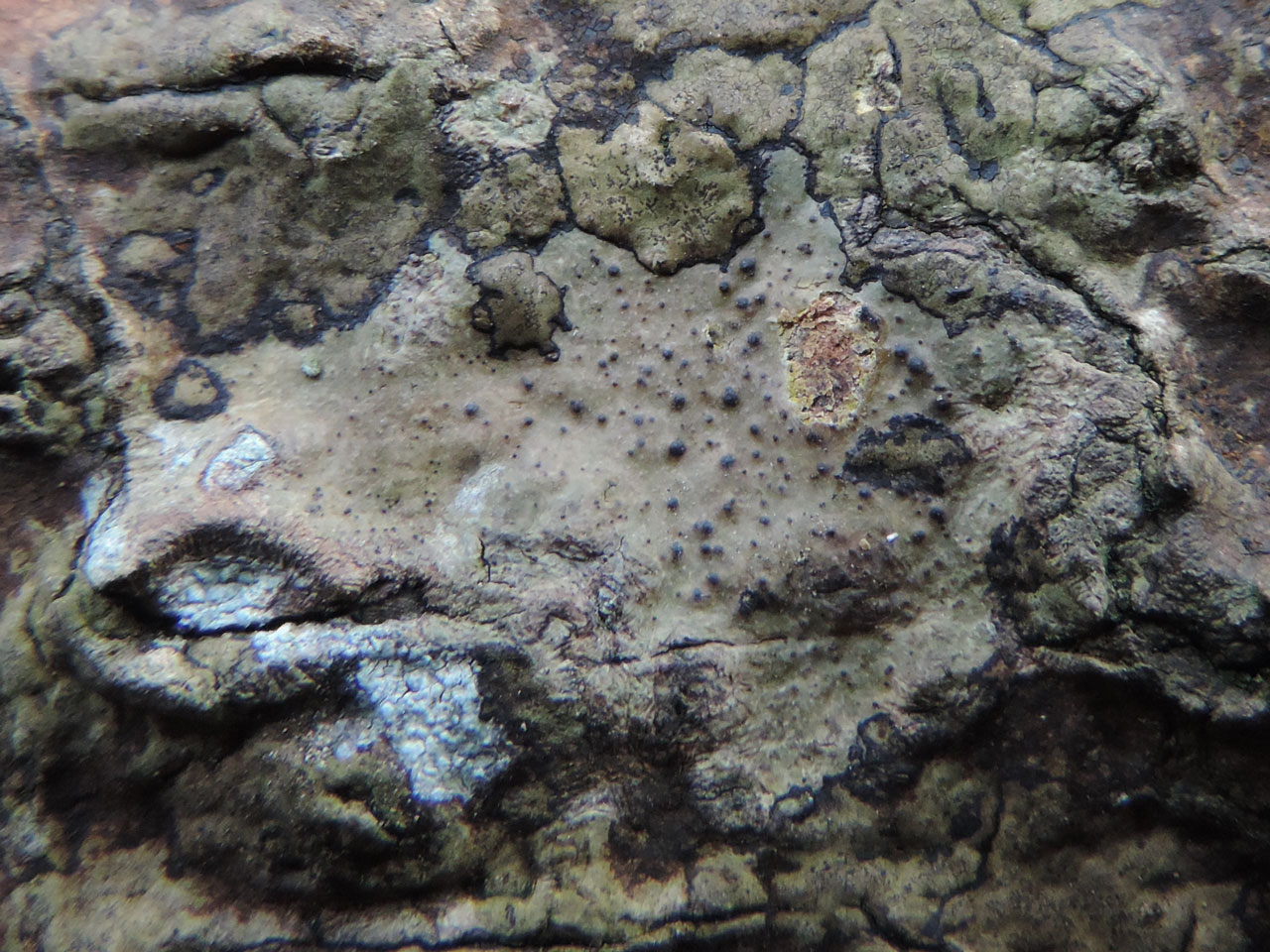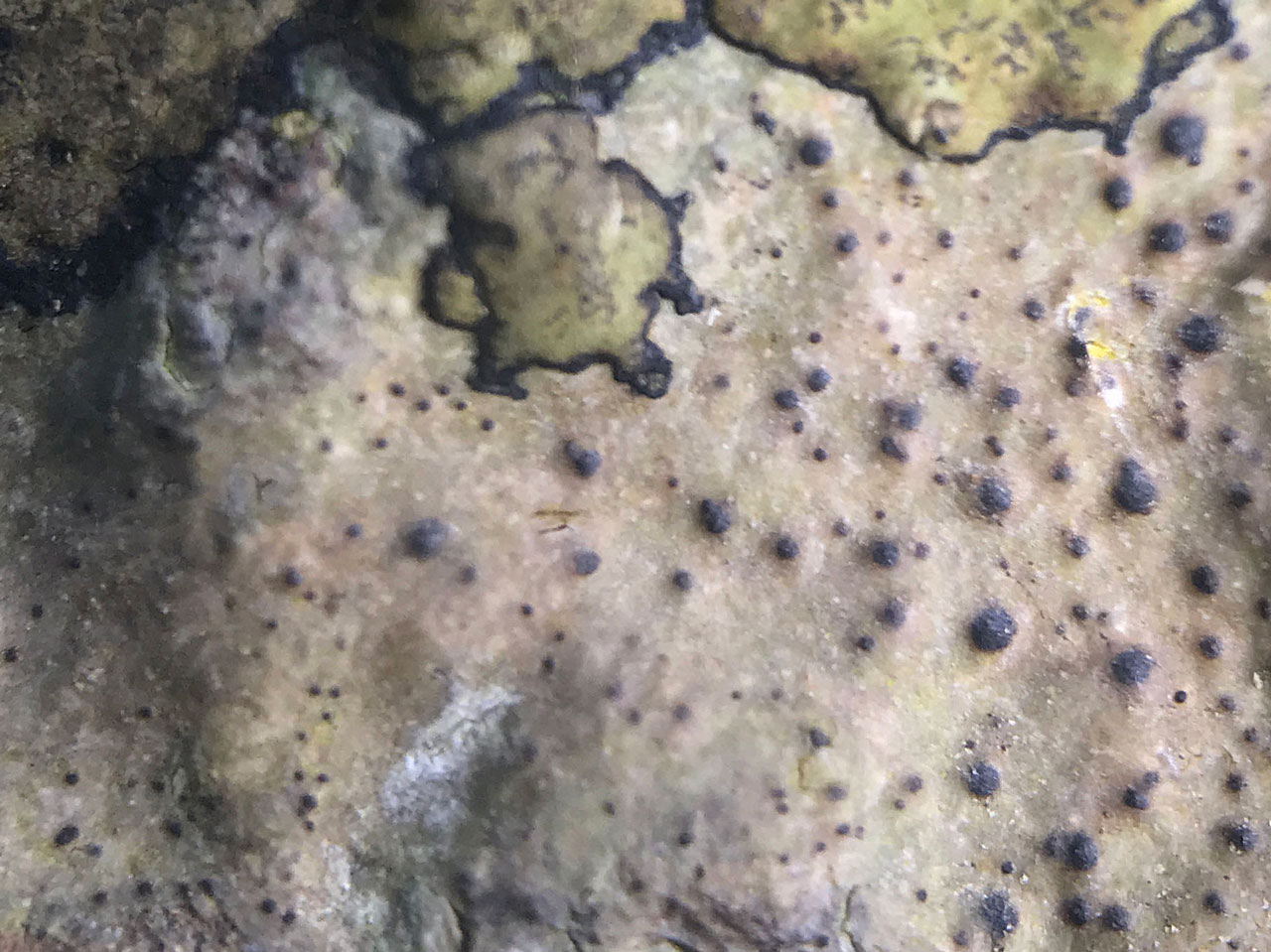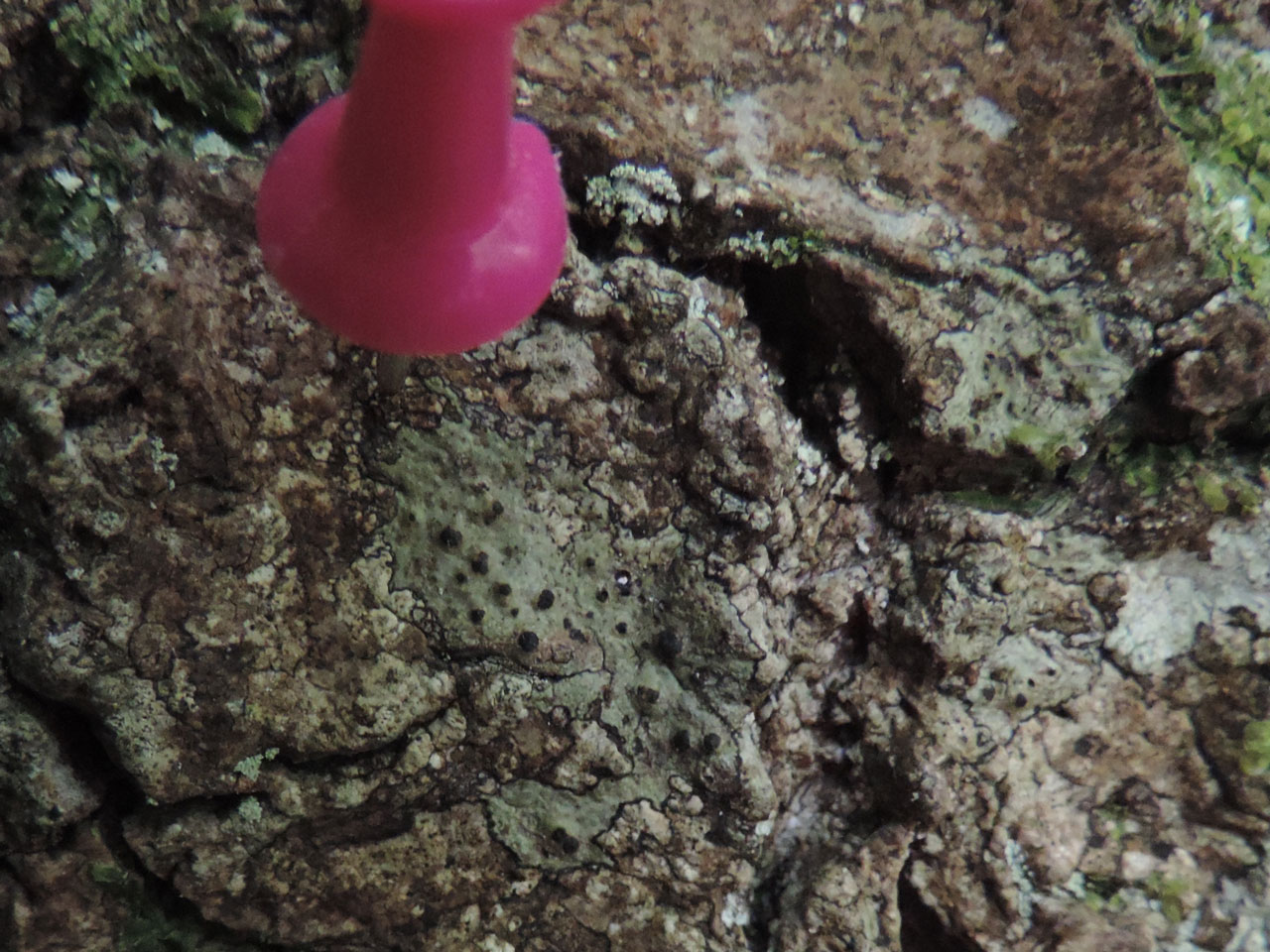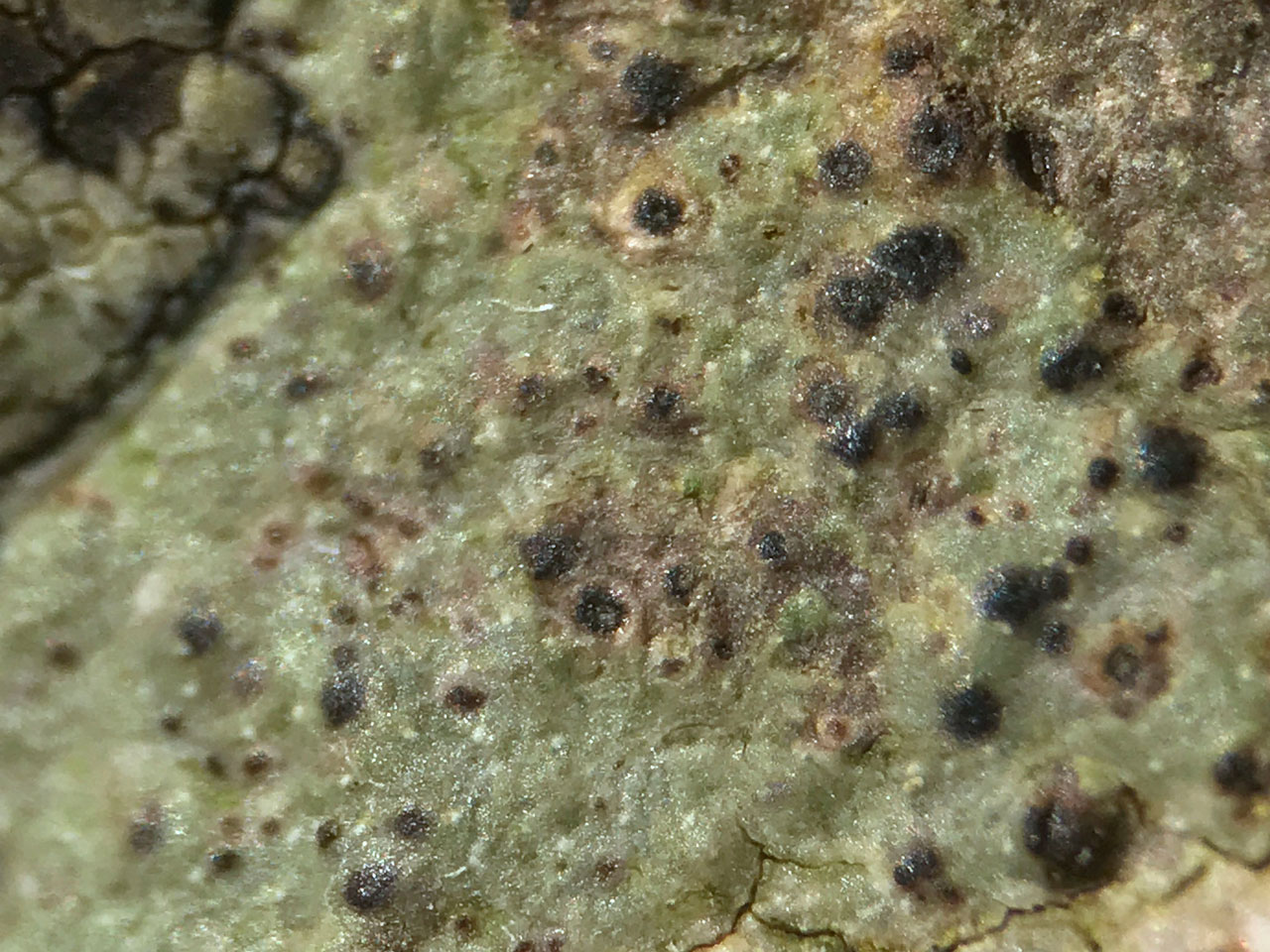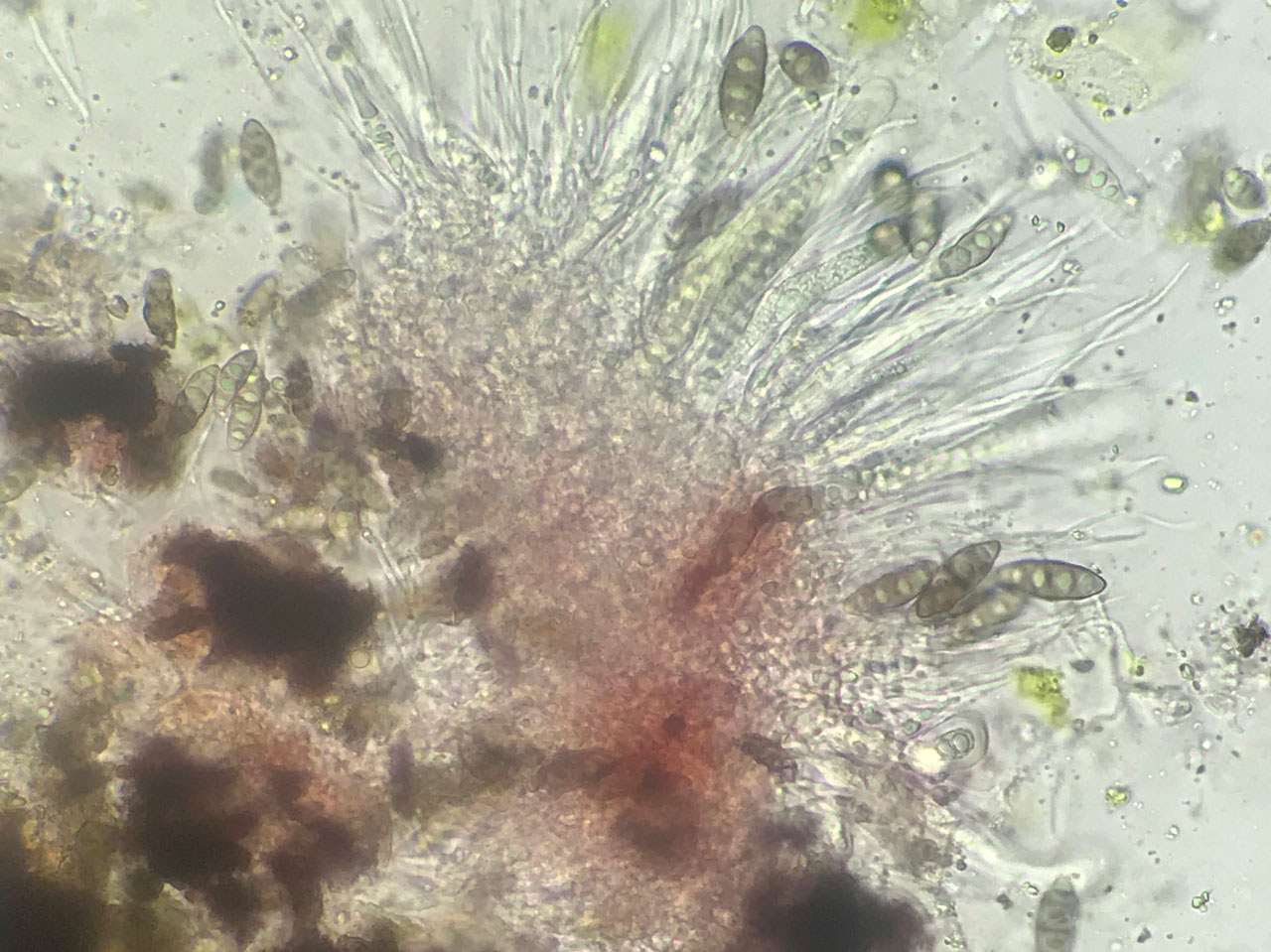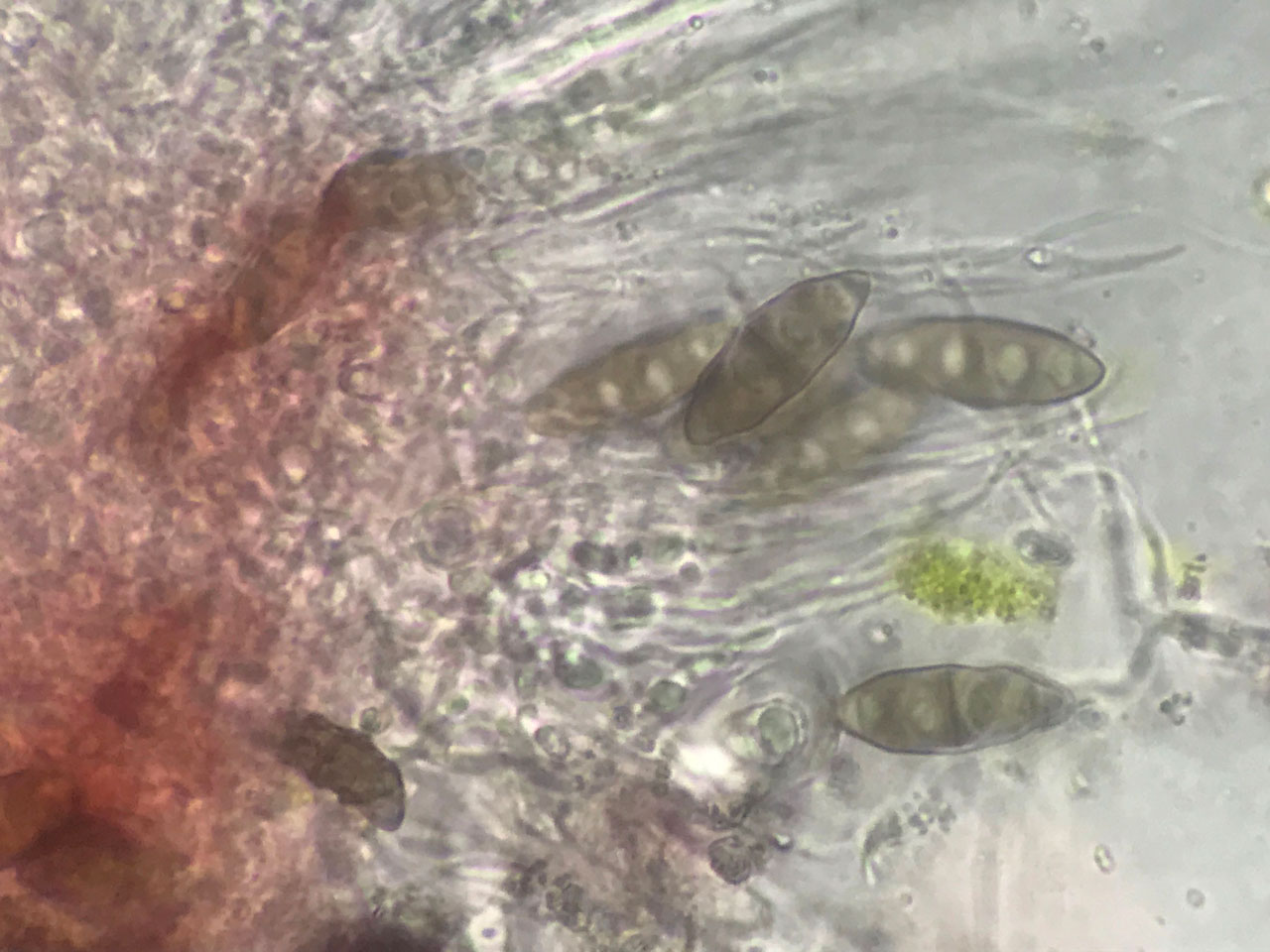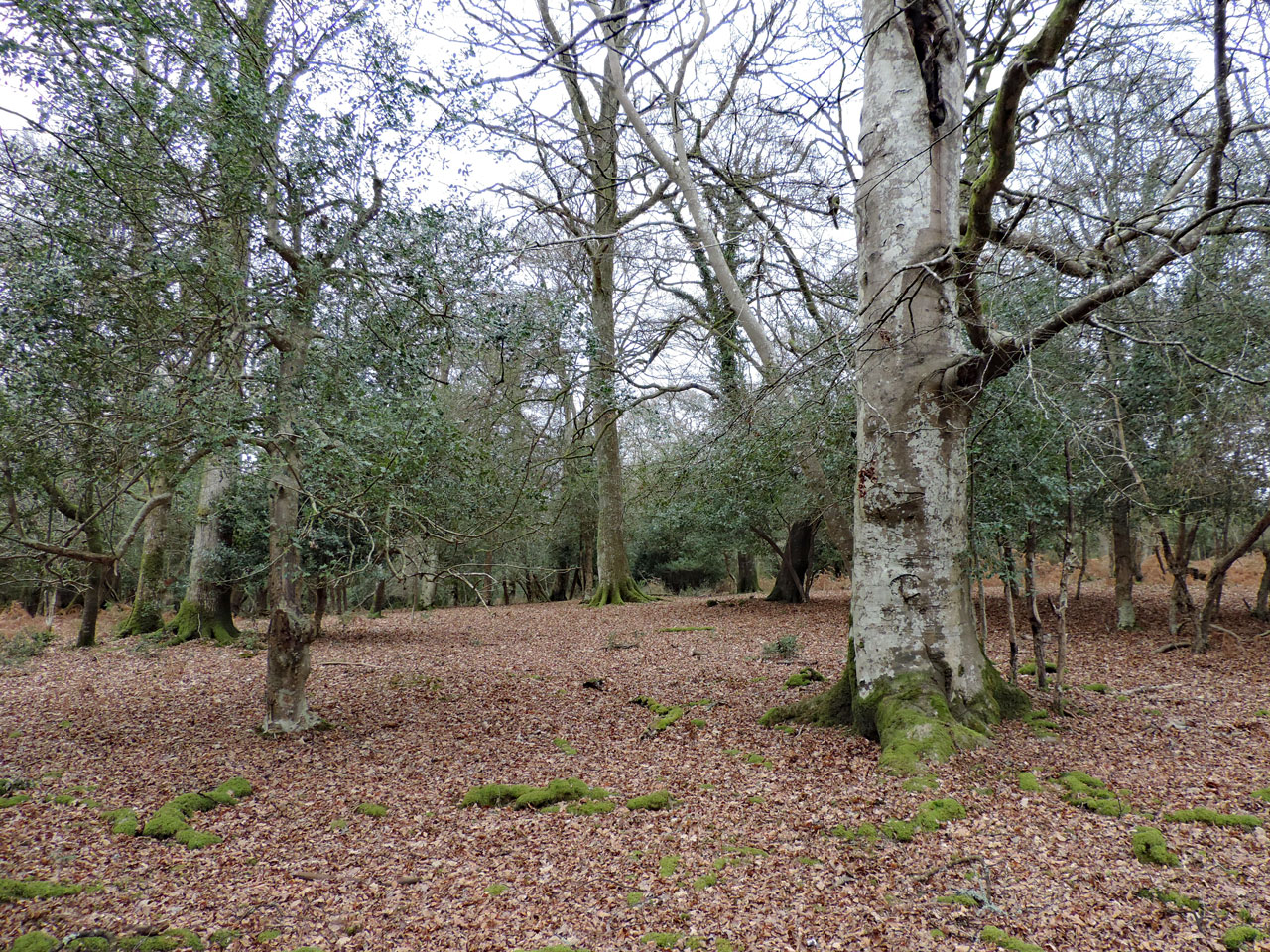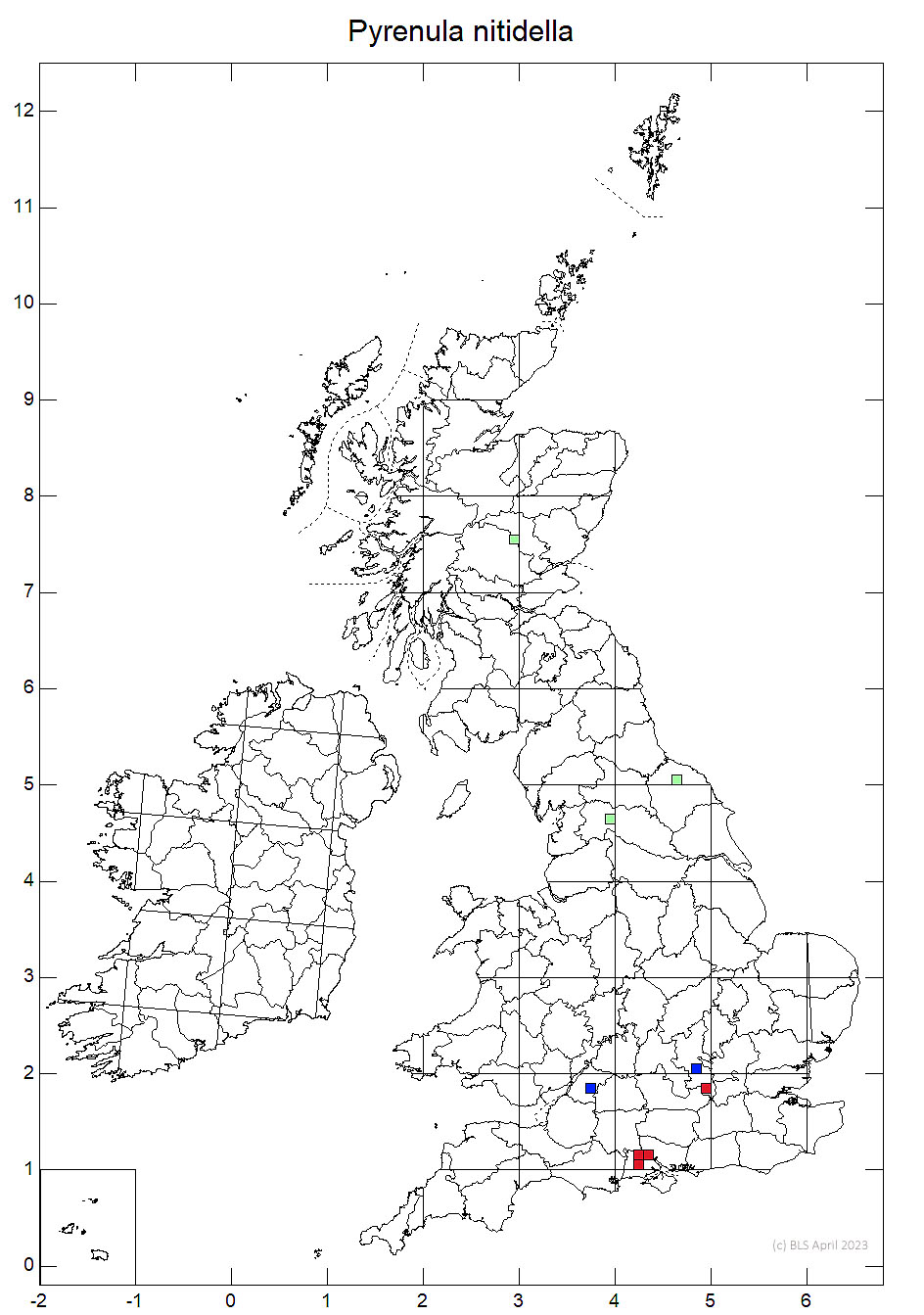Pyrenula nitidella
A very rare Pyrenula similar to P. chlorospila, but differs in the K+ red inner exciple and the smaller ascospores. The rare P. nitida has similar ascospores and K+ red exciple reaction but has larger perithecia, fewer or no pseudocyphellae and a smoother thallus. Perviously thought extinct but discovered associated with P. nitida on veteran Beech in the New Forest and Burnham Beeches.
Thallus olive-brown to fawn, smooth; pseudocyphellae 50–75 μm diam., often sparse, whitish. Perithecia 0.2–0.3 (–0.35) mm diam.; hymenium not inspersed with oil droplets, at sides with K+ purple-red material. Ascospores (20–) 22–26 (–28) × (8–) 8.5–11 (–12) μm, 3-septate. Thallus C–, K+ yellow to pale orange in parts, KC–, Pd–, UV± whitish (unidentified anthraquinones).
Very similar to P. nitida, but with smaller perithecia. Most pre-1980 records of this species in Britain and Ireland refer to P. chlorospila, which differs in the lack of anthraquinones in the perithecia. As with P. nitida the K+ purple hymenium can be detected in the field.
On smooth bark of trees; very rare in Britain. Recent records from veteran Beech in old growth pasture woodland stands

Previously known with certainty from only two sites in England (N.E. Yorkshire) and Scotland (E. Perthshire), recently discovered in Hampshire (New Forest) and Buckingham (Burnham Beeches) on veteran Fagus, associated with P. nitida.
Currently known only from two locations (New Forest & Burnham Beeches). The New Forest population includes at least nine Beech trees recorded since 2000 in two sub-populations (Rushpole & Wooson's – Wood Cates – Allum Green – Knightwood). At Burnham Beeches five trees were recorded in 2020 (Sanderson, 2020). In both areas shade from regenerating Holly or Beech is a threat, but is being reduced by grazing and cutting of excess regeneration.
Britain: Regional Extinct in 2012, on current data would be Critically Endangered D.
Cannon, P., Coppins, B., Aptroot, A., Sanderson, A. & Simkin, J. (2023). Perithecial genera I, including Acrocordia, Alloarthopyrenia, Anisomeridium, Antennulariella, Arthopyrenia, Celothelium, Cyrtidula, Dichoporis, Eopyrenula, Julella, Leptorhaphis, Leptosillia, Lithothelium, Mycomicrothelia, Mycoporum, Naetrocymbe, Pyrenula, Rhaphidicyrtis, Sarcopyrenia, Swinscowia and Tomasellia. Revisions of British and Irish Lichens 37: 1-59.
Sanderson, N. A. (2020) Lichen Survey of Burnham Beeches NNR, Buckinghamshire, 2020. A report by Botanical Survey & Assessment to Plantlife.
Text by Neil A Sanderson
